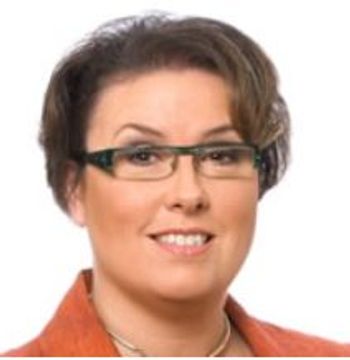
Chronic Kidney Disease Present in 1 in 10 Adults: Study of 2.4 Million People in 11 Countries
Chronic kidney disease is underdiagnosed and undertreated across major Western countries, according to findings of the new CaReMe CKD study.
The international collaboration called the CArdioREnal and MEtabolic (CaReMe) CKD study also found that among the persons identified, 2 out of 3 have not received a diagnosis of the progressive disease and many of those who could benefit from renin-angiotensin aldosterone system (RAAS) inhibitor therapy are not receiving the drugs.
Writing in The Lancet Regional Health - Europe investigators report further that between 6% and 9% of those with possible CKD die annually, with cardiorenal (CKD or
Current data highly variable
CaReMe CKD study investigators suggest that while current prevalence estimates for CKD may accurately represent underlying distributions of CKD in different populations, variation among them is significant.
“To date, estimates of the prevalence, impact and costs of CKD varied widely due to limited studies of the disease. The CaReMe CKD study is one of the largest, longest and broadest studies assessing this chronic disease and adding to the body of evidence for CKD," said lead study author Navdeep Tangri, MD PhD, professor of medicine in the department of medicine and community health sciences, University of Manitoba, Winnipeg, Canada in a media
The study assessed individual-level contemporaneous primary data collected from digital healthcare systems in 11 nations using a prespecified common protocol. Investigators' goal was to determine the prevalence of each stage of CKD and to detail patient characteristics, risks, clinical outcomes, and costs associated with CKD across the participating countries. CKD and its stages were defined in accordance with current Kidney Disease: Improving Global Outcomes (KDIGO) criteria.
Patients either had a confirmed diagnosis of CKD, identified via diagnostic code, or a single pathologic measured value of urine albumin-creatinine ratio
CaReMe CKD Findings
Tangri et al report that among the 2.4 million participants, the mean pooled age was 75 years, 53% were women, 38% had diabetes, and 60% were treated with RAAS inhibitors.
The pooled prevalence across all 11 countries of possible CKD was 10% (95% confidence interval 8.5‒11.4). The prevalence of possible CKD in countries where background population estimates were available was 10%; for mCKD the prevalence was 7% and of these, 1 in 3 were defined by UACR and 2 in 3 by eGFR.
Two out of 3 patients with CKD identified by laboratory criteria did not have a corresponding CKD-specific diagnostic code which underscores the authors’ belief before beginning the study that CKD prevalence will be underestimated based on diagnostic codes alone.
Two out of 3 patients with CKD identified by laboratory criteria did not have a corresponding CKD-specific diagnostic code.
Moreover, analysis of data from these patients found the majority (42%) had KDIGO stage 3A, a value that the research team said was consistent across countries. The proportion of the patient group with mCKD based on UACR alone (KDIGO stages 1 and 2) was 29% although investigators observed substantial heterogeneity among countries.
Patients with mCKD and dCKD had similar age and systolic blood pressure (<140 mmHg) profiles. However, the more comorbidities were identified in the latter group, including HF and coronary artery disease.
Just more than half of patients were treated with RAAS inhibitors—55.9% in the dCKD group of patients and 59.9% in the mCKD group. Among patients with mCKD approximately 2% received dialysis treatment; the rate among dCKD patients was 2-fold higher.
The authors explain that SGLT2 inhibitors had not yet been approved for CKD treatment when data were captured, thus use was low (2.3-2.8%) across countries.
For both mCKD and dCKD groups and across all countries, rates were consistently higher for cardiorenal events (CKD or HF) than for atherosclerotic events (MI or stroke).
Of significant note, between the dCKD and mCKD groups, cardiorenal event rates were approximately twice as high among the former vs the latter, while MI/stroke rates were more balanced.
Of significant note, between the dCKD and mCKD groups, cardiorenal event rates were approximately twice as high among the former vs the latter, while MI/stroke rates were more balanced.
_____________
Nearly two-thirds (65%) of patients were hospitalized for CKD or HF, and 62% died, annually.
Rates of cardiovascular and all-cause death were 31-49% higher in dCKD patients than in mCKD patients. The share of all deaths attributable to renal or cardiovascular causes was similar (50%) in both groups as was the share attributed to cardiovascular causes (33%).
Nearly two-thirds (65%) of patients were hospitalized for CKD or HF, and 62% died, annually. The authors emphasize that overall costs for renal and HF events were consistently higher than costs for ASCVD events in CKD patients across the 11 participating countries.
"The results highlight the considerable public health impact of CKD and the importance of early detection and disease management to improve patients’ lives and reduce healthcare costs,” commented lead author Tangri.
Tangri and colleagues call out a number of the study’s strengths, including the size of the sample, the largely unprecedented multinational collection of real-world data from total populations and notably, the consistency of the findings across diverse countries “despite differences in ethnicity, socioeconomic status, healthcare systems, and treatment guidelines.”
The international team also acknowledge that sampling bias is likely in their study given the diversity among data sources and that generalizability to populations with “different circumstances in terms of race, resources, or care is unknown.
Those facts notwithstanding, however, they write, “…these are some of the best available real-world data to gauge the prevalence of CKD and patient characteristics.”
Reference: Sundström J, Bodegard J, Bollmann A, et al, on behalf of the CaReMe CKD Investigators.
Newsletter
Enhance your clinical practice with the Patient Care newsletter, offering the latest evidence-based guidelines, diagnostic insights, and treatment strategies for primary care physicians.

























































































































































































































































































